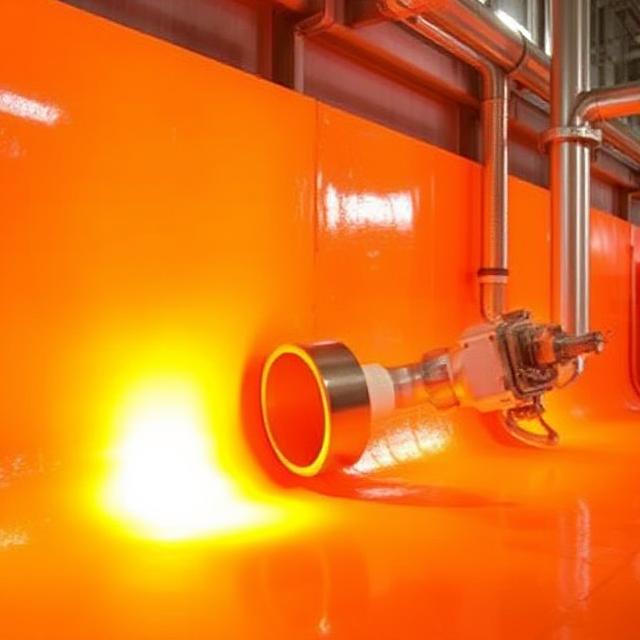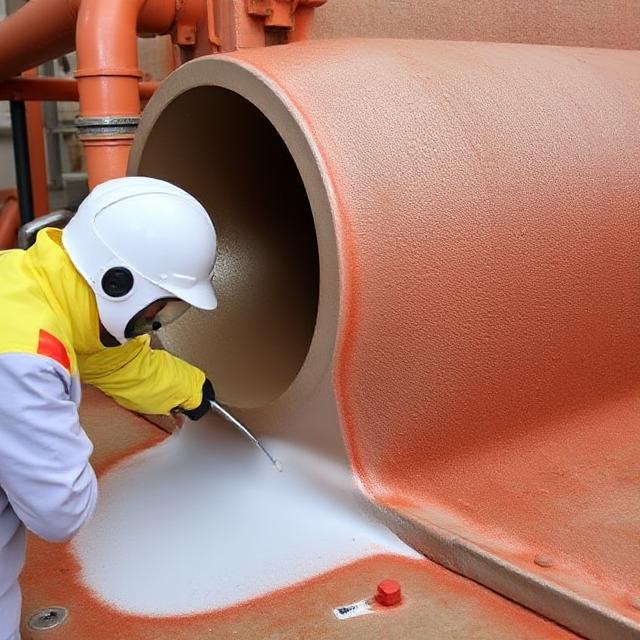Views: 0 Author: Site Editor Publish Time: 2025-05-15 Origin: Site








Thermal barriers are essential for controlling heat flow in homes, buildings, vehicles, and industrial systems. They block or slow down heat transfer, keeping energy inside or outside where it belongs. They reduce power bills, protect structures, and improve comfort. This article explores the most effective types of thermal barrier materials. It also explains how they work, where to use them, and why they matter.
A thermal barrier is a layer of material designed to limit heat transfer. It works by blocking heat through conduction, convection, or radiation. Homes, businesses, and machines all use thermal barriers to stay efficient and safe.
We see them in walls, roofs, engine parts, and even packaging. Whether it's keeping a home cool in Fort Worth or insulating a furnace, a good thermal barrier makes a big difference.
Thermal barriers control heat in three ways:
Conduction: Stops heat from moving through solid materials.
Convection: Limits heat carried by air or fluids.
Radiation: Reflects radiant heat from the sun or other sources.
Some thermal barriers absorb heat. Others reflect it. Some resist heat flow due to low conductivity. There are passive barriers like insulation and active systems like smart coatings. Both types help maintain safe, stable temperatures.
One of the most common thermal barriers is insulation. These materials trap air and slow heat transfer. Here are the top examples:
Fiberglass: Found in rolls or batts. Easy to install. Good R-value.
Spray foam insulation: Expands to fill gaps. Seals air leaks. Offers high R-value.
Mineral wool and cellulose: Made from natural or recycled materials. Fire-resistant and eco-friendly.
Use them in attics, walls, ceilings, and floors. Insulation can cut heating and cooling costs by up to 30%.
Radiant barriers reflect heat away instead of absorbing it. These thermal barriers are ideal for warm climates.
Reflective foil insulation: Installed in attics to bounce sunlight away.
Roof deck coatings: Painted onto surfaces to reflect solar energy.
They work best when paired with attic insulation. In places like Texas, radiant barriers can drop attic temps by 30°F or more.
Thermal Barrier Coatings are advanced materials used in aerospace, automotive, and HVAC. These coatings shield components from extreme heat. The structure includes:
Substrate: The base metal surface.
Bond coat: Helps the coating stick.
TGO (Thermally Grown Oxide): Forms between the layers.
Ceramic topcoat: Provides insulation at high temperatures.
One key application method is Thermal Spray. It uses heated particles to coat surfaces quickly and precisely. TBCs resist temperatures above 1,200°C. They're thin, light, and effective. They're found in jet engines, power plants, and race cars.

These paints contain special pigments that reflect heat or provide insulation. They’re used inside and outside buildings.
On exterior walls, they reduce solar gain.
On pipes or tanks, they reduce heat loss.
Some coatings double as waterproofing agents. They’re easy to apply like regular paint and need low maintenance. A perfect thermal barrier for commercial buildings.
A thermal break is a gap filled with insulating material placed between structural elements.
Used in window frames, steel beams, and curtain walls.
Stops heat bridging through metal parts.
Without thermal breaks, metal parts act like heat highways. They let hot or cold air pass through, wasting energy. A simple thermal barrier fix adds long-term savings.
Packaging for food, medicine, and electronics often uses thermal barrier systems.
Metallized films
Multilayer plastics
Coated paper
These materials keep products safe during transport. They protect against temperature swings and humidity. Cold chain logistics rely on these barriers.
Thermal barriers have uses across industries. Here's a breakdown:
| Sector | Use Cases |
|---|---|
| Residential | HVAC efficiency, attic insulation, radiant roof barriers |
| Commercial | Office insulation, pipe coatings, reflective roof materials |
| Industrial | Furnaces, turbines, casting molds |
| Transportation | Aircraft parts, EV battery systems, engine blocks |
| Packaging | Food containers, medicine packs, electronics shipping boxes |
In each case, the thermal barrier helps control heat and improve performance.
Cuts energy use for heating and cooling
Reduces power bills
Decreases load on HVAC systems
Adding a thermal barrier can reduce HVAC energy use by 15–30%.
Keeps rooms at stable temps
Minimizes hot and cold spots
Less reliance on air conditioners or heaters
Lowers operating temps
Reduces thermal fatigue
Protects expensive parts from early failure
TBCs applied using Thermal Spray can extend turbine life from 1,000 to over 4,000 hours.

Reduces CO₂ emissions
Supports green building standards
Promotes sustainable construction
Radiant barriers and attic insulation are vital
Building codes encourage reflective roofs and sealed ducts
Local programs offer rebates for insulation upgrades
High R-value insulation is essential
Thermal breaks prevent heat loss in windows and steel frames
Vapor barriers help control moisture and mold
Every thermal barrier works differently. What helps in Texas might not work in Michigan. Consider:
Humidity levels
Solar exposure
Heating vs. cooling needs
| Material | R-Value per Inch | Best Use |
|---|---|---|
| Fiberglass Batts | 3.0–3.8 | Walls, attics |
| Spray Foam | 6.0–7.0 | Walls, small cavities |
| Mineral Wool | 3.3–3.7 | Fireproof areas |
| Reflective Foil | N/A (reflective) | Attic and radiant use |
| Ceramic Coatings | N/A | High-heat metal surfaces |
R-value shows how well a material resists heat. Higher values mean better insulation.
DIY or professional install?
Maintenance level? Spray foam lasts longer than batts.
Access points? Some barriers need full surface coverage.
Get an energy audit to find where you lose heat. Then pick the right thermal barrier to fix it.
Steps include:
Surface cleaning
Material placement or spray
Sealing gaps
Final inspection
Thermal Spray coatings need expert handling. Insulation and foil can be DIY-friendly.
Poor install = poor results. Gaps and errors can waste money and energy. Thermal imaging tools help detect leaks and weak spots.
Most thermal barriers last 10–30 years. Spray foam can last a lifetime. TBCs may need reapplication in harsh environments.
Watch for:
Peeling paint
Damaged insulation
Gaps or moisture signs
Replace damaged materials to keep the barrier working.
New materials and tools are pushing thermal protection forward:
Smart coatings: Adjust to temp changes, self-repair
Bio-based barriers: Made from plants or recycled waste
Nano-insulation: Ultra-thin but powerful
AI modeling: Predicts where and when to apply coatings
Thermal Spray methods are also evolving. New plasma technologies offer better bond strength and faster application.
They are materials or systems that stop heat from moving into or out of a space.
Insulation, radiant barriers, thermal barrier coatings, reflective paints, and packaging films.
They reduce heat flow. This keeps HVAC systems from working too hard, lowering energy use.
Yes. Both types benefit from added insulation, coatings, or radiant protection.
Some, like fiberglass batts or foil, are DIY-friendly. Others, like Thermal Spray coatings, need pros.
Anywhere from $0.50 to $4.00 per square foot, depending on the material and method.
10–30 years, depending on exposure, quality, and maintenance.
Thermal barriers save money, reduce energy waste, and protect systems. From homes to jet engines, they make a real difference. Whether it’s insulation, Thermal Spray coatings, or radiant foil, every layer helps.
They improve comfort, support the environment, and pay off over time. If you're planning an upgrade, adding a thermal barrier is one of the smartest moves you can make.
